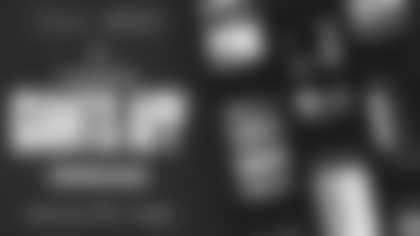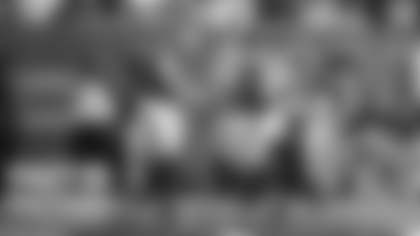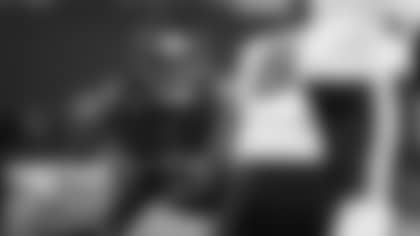The best performance of Daniel Jones' rookie year was his starting debut in Tampa.
John Schmeelk: Fiction -- Jones' next to last game of the season against the Redskins was his best game of the year. Jones had a higher quarterback rating (132.1) vs. Washington, with five TD passes, no turnovers, and the game-winning drive in overtime. The comeback against the Buccaneers was more impressive, trailing by 18 points at halftime, but he also lost two fumbles to take that game down a notch.
Lance Medow: Fact -- In his first career NFL start, Jones completed nearly 64% of his throws for 336 yards and two touchdowns while adding two scores on the ground, highlighted by the winning TD with 1:16 left in the game. You'd be hard-pressed to find a better performance by a rookie quarterback in this situation. Jones made some impressive throws, specifically in the third quarter - a 46-yard strike to Darius Slayton and a touchdown pass to Sterling Shepard, when he put the ball in a spot where only his receiver could get it. Jones' decision-making throughout the game was one of a polished pro. On the decisive touchdown, he noticed the middle of the field parted like the Red Sea and ran into the end zone rather than forcing a pass.
The best part of Daniel Jones' game is his deep ball.
Schmeelk: Fiction -- Jones threw the ball well on deep tosses over the middle, but his overall accuracy and performance on deep attempts was average. He only completed 29.6% of his passes that targeted a receiver 20+ yards downfield, according to Pro Football Focus. He was much more accurate between the numbers than to the sideline. He had seven "turnover-worthy" plays on deep sideline throws, tied for fourth-most in the NFL. He was far more efficient when he had shorter dropbacks, and got rid of the ball quickly on shorter routes.
Medow: Fiction -- Jones' arm strength is appealing, but I'd argue the best part of his game is his mobility. We saw Jones extend plays and keep opposing defenses on their toes all season. This was no better demonstrated than vs. the Bucs, when he completed a 46-yard pass down the middle to Darius Slayton. Jones dropped back, rolled to his left and managed to get off the throw, despite pressure quickly closing in from every angle. Jones also did plenty of damage as a runner. He finished the season with the second-most rushes (45) on the club, with a team-leading 6.2 yards per carry (minimum 10 rushes). A quarterback who has the ability to take off with his legs makes an offense that much more dangerous in the present-day NFL.
Second seasons are tougher than rookie campaigns for quarterbacks because opponents have film on them.
Schmeelk: Fiction -- This can be the case for certain quarterbacks, such as what we saw with Baker Mayfield, who had a tougher second year. For other quarterbacks, like Lamar Jackson, their own teams figure out what they are good at and the quarterback takes a big jump. Jones' rookie tape might not apply as much because he will be directing a different offense under a new coaching staff even if opponents learned about some of his first-year tendencies. The answer can be different on a case-by-case basis, depending on the quarterback and his team's circumstances.
Medow: Fact -- One of the advantages a rookie quarterback has - specifically in the NFL - is the mystique of the unknown. Teams have plenty of college film to study, but they have no clue whether that skillset and decision-making will transfer over to the pros and whether a new scheme will be a good fit for him. You can argue a quarterback is a bit more comfortable with the offense and has a better feel for his teammates in Year 2, but the same can be said for the opposition since there's much more information it can access on film. That's why it's fair to say the second season presents more of an even playing field, meaning a quarterback's success will be determined by how well he adjusts.
Touchdown-to-turnover ratio is the most important metric for Jones this season.
Schmeelk: FICTION SLAM -- The combined total of fumbles and interceptions are the most important metric for Jones, regardless of his touchdown passes. His turnovers must come down, even if it means a decrease in scoring strikes. Perhaps Saquon Barkley makes up for a decrease in the team's passing touchdowns with rushing scores of his own …
Jones must also do better with his average yards per pass attempt. Last season, Jones was tied for 32nd in the league at 6.6 yards per attempt among 44 QBs with at least 100 dropbacks, according to Pro Football Focus. He was also 25th in average depth of target on his throws. For Jones to improve these rankings and be a more productive quarterback, he needs to get the ball a bit deeper down the field more consistently.
His completion percentage is an even bigger key. If Jones completes more of his throws, then his yards per attempt will go higher. Last year, he completed 61.9% of his passes, which ranked 29th of the 44 qualifiers. When you dig into the advanced accuracy numbers, they show Jones is good at avoiding uncatchable passes, but isn't precise enough with his ball location. He is also a bit too willing to throw the ball to covered wide receivers, which leads to incompletions and turnovers.
Medow: Fiction -- Based on last year's trends, Jones' fumble rate is the stat to watch. He fumbled 18 times (and lost 11) in 12 starts or 1.5 fumbles per start. It goes without saying that ball security is critical for all players but even more important for quarterbacks, who touch the ball on every play.
Although you can't overlook the touchdown-to-turnover ratio, this metric is influenced by many other factors. Interceptions, as a standalone stat, don't always tell the whole story. You need to know: Did the quarterback get hit as the ball was released? Was the ball deflected by a defender or receiver? Was it a throwaway attempt that went wrong? Context is also important when it comes to fumbles, yet holding onto the ball when running, handing off or feeling pressure is far more controllable than what happens once it leaves the quarterback's hands.

Giants App
Download the Giants' official app for iPhone, iPad and Android devices

















